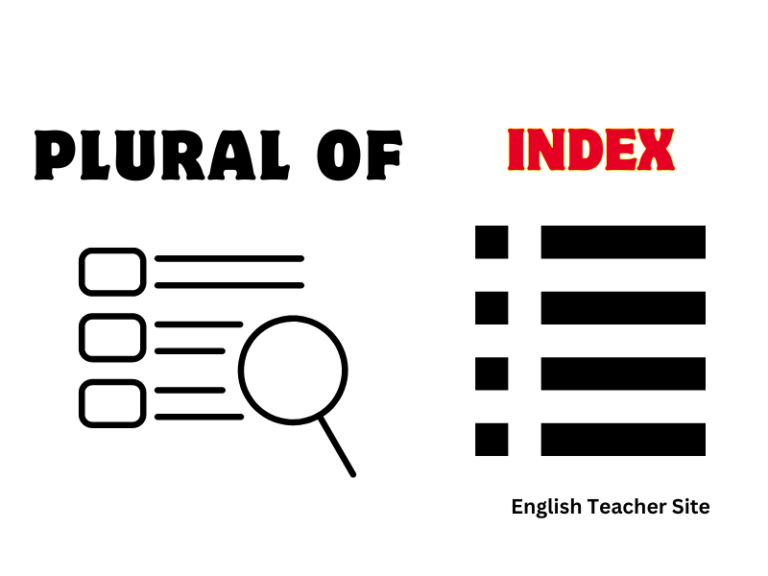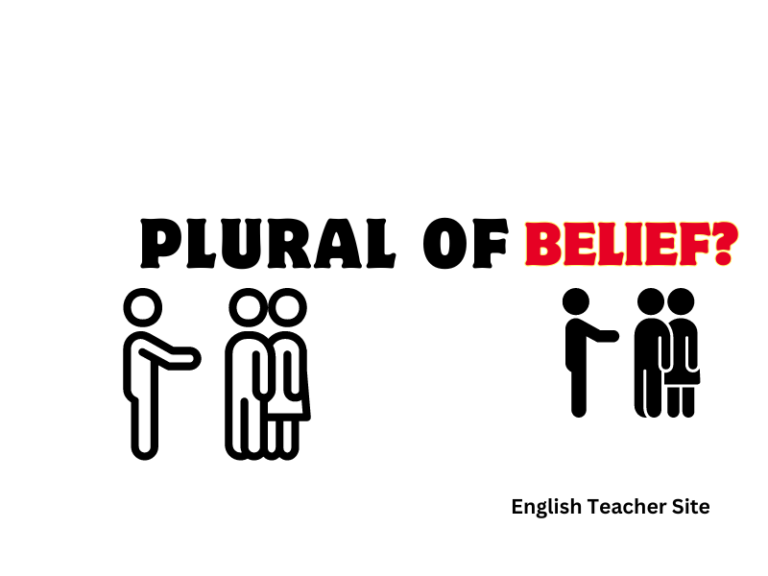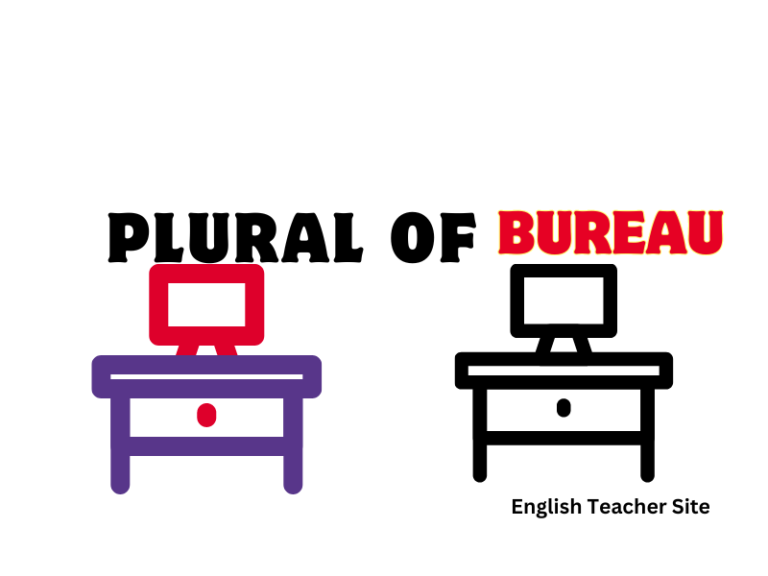Past Tense of Let Explained: What You Need to Know
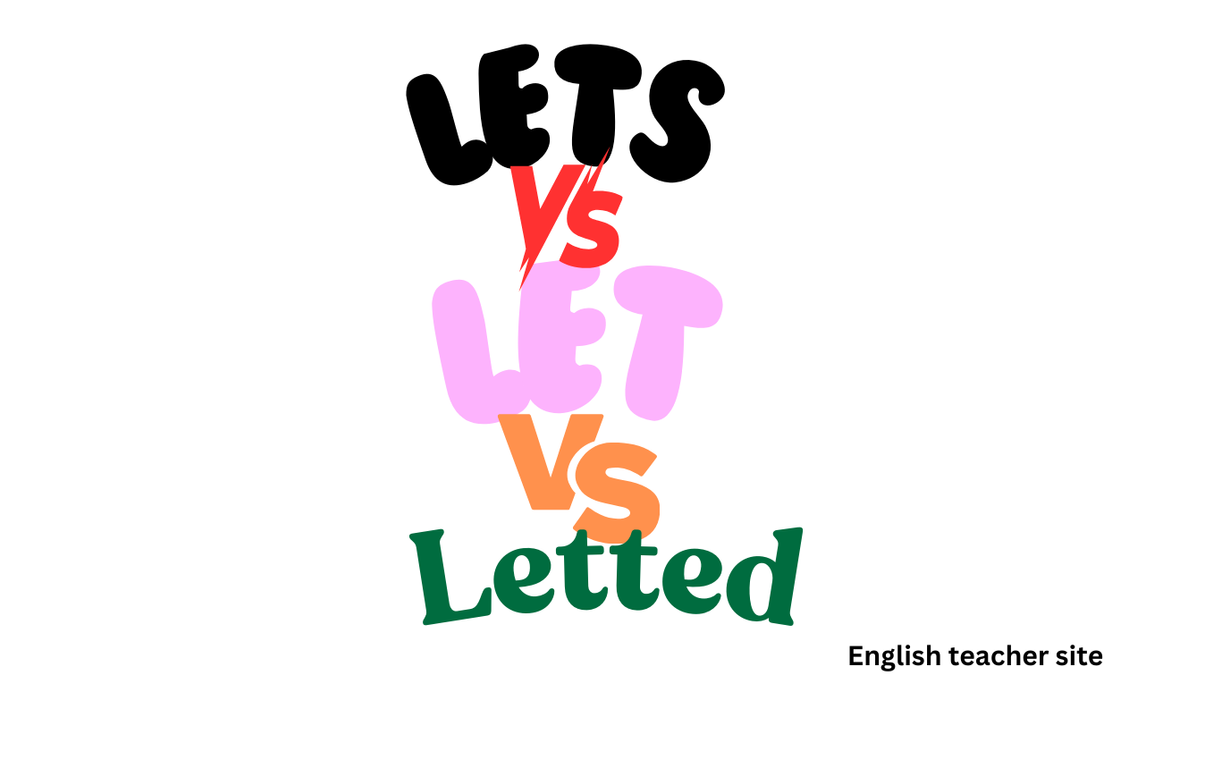
Answer: Past of Let is Let.
The past tense of “let” is a unique linguistic phenomenon in English. It holds particular importance in spoken and written communication, offering both simplicity and flexibility. While many verbs alter their form when transitioning to the past tense, “let” remains unchanged, a distinctive feature that often leads to confusion. Understanding how to properly use “let” in its past form will enhance your communication skills and allow you to convey ideas more precisely.
Quick Overview of Let and Its Common Uses
“Let” is primarily used to mean “allow” or “permit,” but it also finds its way into phrases that express consent, permission, or even an invitation. Common examples include “Let’s go,” “Let me help you,” and “Let him decide.” The fluidity of the verb’s meaning and the simplicity of its form make it versatile in everyday communication. However, when shifting to the past tense, things remain seemingly unchanged, which often leads to confusion among learners of English.
Understanding Let in the Present Tense
In the present tense, “let” typically means to allow, permit, or give consent for something to happen. It’s an action directed toward the permission or authorization of an event. For example, when someone says, “I let him stay at my house,” they are granting permission for the person to stay.
Examples of Let in Everyday Conversation
“Let” is frequently used in common interactions. It might appear in invitations, requests, or commands. For instance:
- “Let me explain this to you.”
- “Let’s meet at 3 PM.”
- “Don’t let anyone in without permission.”
In these examples, “let” establishes the notion of permission or action, making the interaction smooth and cooperative.
The Past Tense of Let: The Basics
How Do We Form the Past Tense of Let?
Forming the past tense of “let” is simpler than most verbs in English. Unlike regular verbs that add -ed, “let” remains unchanged. The past tense form of “let” is exactly the same as its present form. For example:
- Present: “I let him stay at my house.”
- Past: “I let him stay at my house.”
This simplicity can be confusing for those who expect an alteration in form but, in fact, the verb stays the same.
Why Let Doesn’t Change in the Past Tense
The reason “let” does not change in the past tense has to do with its unique etymology and historical development. In its roots, “let” comes from Old English, where it carried the same meaning of permission or allowance without requiring tense alteration. Over time, this irregularity was preserved in modern English, making it one of the few verbs that remain identical in both present and past forms.
Examples of Let in the Past Tense
Despite its unchanged form, “let” still signifies a past event, just as any other verb in the past tense. The context provides clarity on its timing. For example:
- “He let me borrow his car yesterday.”
- “She let me in the house after I knocked.”
In these cases, “let” is clearly acting as a past tense verb because the actions occurred previously.
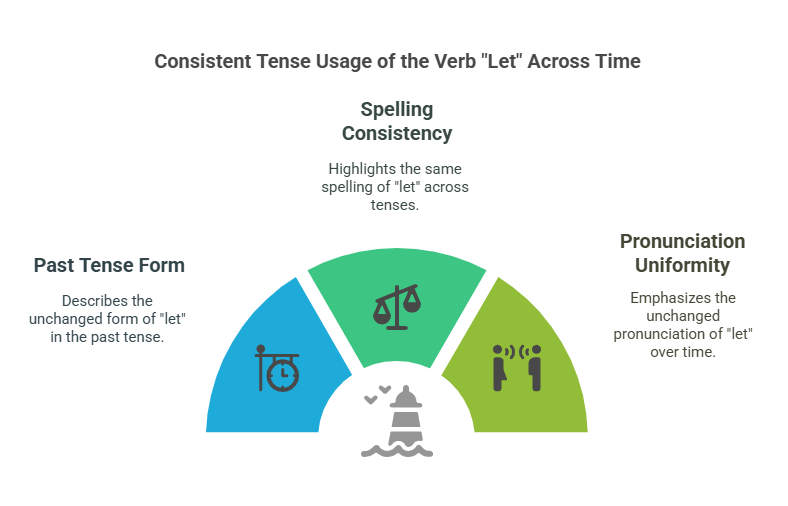
Common Mistakes with the Past Tense of Let
Let vs. Letting vs. Letted: What’s the Difference?
A common confusion arises when people mistakenly use “letted” as the past tense of “let.” The error comes from overapplying standard tense rules. “Let” is an irregular verb, and “letted” is not a correct form. “Let” is the same in both the present and the past tense, unlike verbs such as “play,” which change to “played.” The word “letting” is the present participle form of “let,” used for continuous tenses, not the past tense.
When Do People Confuse Let and Letting?
Another common issue is the confusion between “let” and “letting.” While “let” is a simple verb that conveys permission or allowance, “letting” is used in continuous tenses, indicating an ongoing action. For example, “I let him leave” (simple past) vs. “I am letting him leave” (present continuous). The latter emphasizes the continuous action of allowing someone to leave, while the former simply recounts an event that has already happened.
Clarifying Misconceptions About the Past Tense of Let
It’s crucial to remember that “let” does not change, even when referring to past events. For instance, it’s incorrect to say “I letted him go” when referring to the past. The correct form is “I let him go,” regardless of the tense.
How to Use the Past Tense of Let in Sentences
Structuring Sentences with Let in the Past Tense
To use the past tense of “let” correctly in sentences, simply follow the same structure as the present tense, keeping in mind the context will make it clear that the action took place in the past. For instance:
- “They let me leave early yesterday.”
- “I let him borrow my notes last week.”
Here, the time expressions (“yesterday” and “last week”) serve to clarify the past tense.
Examples to Practice with
Practicing with real-world examples is key to mastering the past tense of “let.” Consider:
- “They let me join their team last season.”
- “I let her make the final decision.”
These examples provide a chance to see how “let” interacts with different subjects and actions.
How Let Is Used Differently in British and American English
While “let” itself remains unchanged, the usage of the verb can vary between British and American English. In British English, “let” is commonly used in formal and legal contexts to imply rental or permission. In American English, “let” tends to be used more colloquially and is often associated with day-to-day conversations. However, the past tense form remains the same in both dialects.
Is There Any Change in Formal vs. Informal Use?
In formal contexts, “let” is used with precision, particularly in legal or contractual language, where it might appear in phrases like “Let it be known” or “Let the record show.” In informal speech, however, the past tense of “let” is just as ubiquitous, used in casual conversations without any modification in form.
Conclusion: Perfecting Your Use of the Past Tense of Let
Mastering the past tense of “let” is essential for clear and accurate communication in both written and spoken English. By understanding its unique structure and common mistakes, you can confidently use “let” in a variety of contexts, enhancing both your grammar and style. Practice, attention to detail, and awareness of common errors will ensure that you use this versatile verb correctly every time.
Source
Harper, Douglas. “Etymology of let.” Online Etymology Dictionary
My name is Khamis Maiouf. I am the creator of the English Teacher Site, dedicated to providing valuable resources and insights for students around the world. With a passion for education and a commitment to helping students enhance their skills, I aim to make English teaching more effective and enjoyable for both educators and students.


